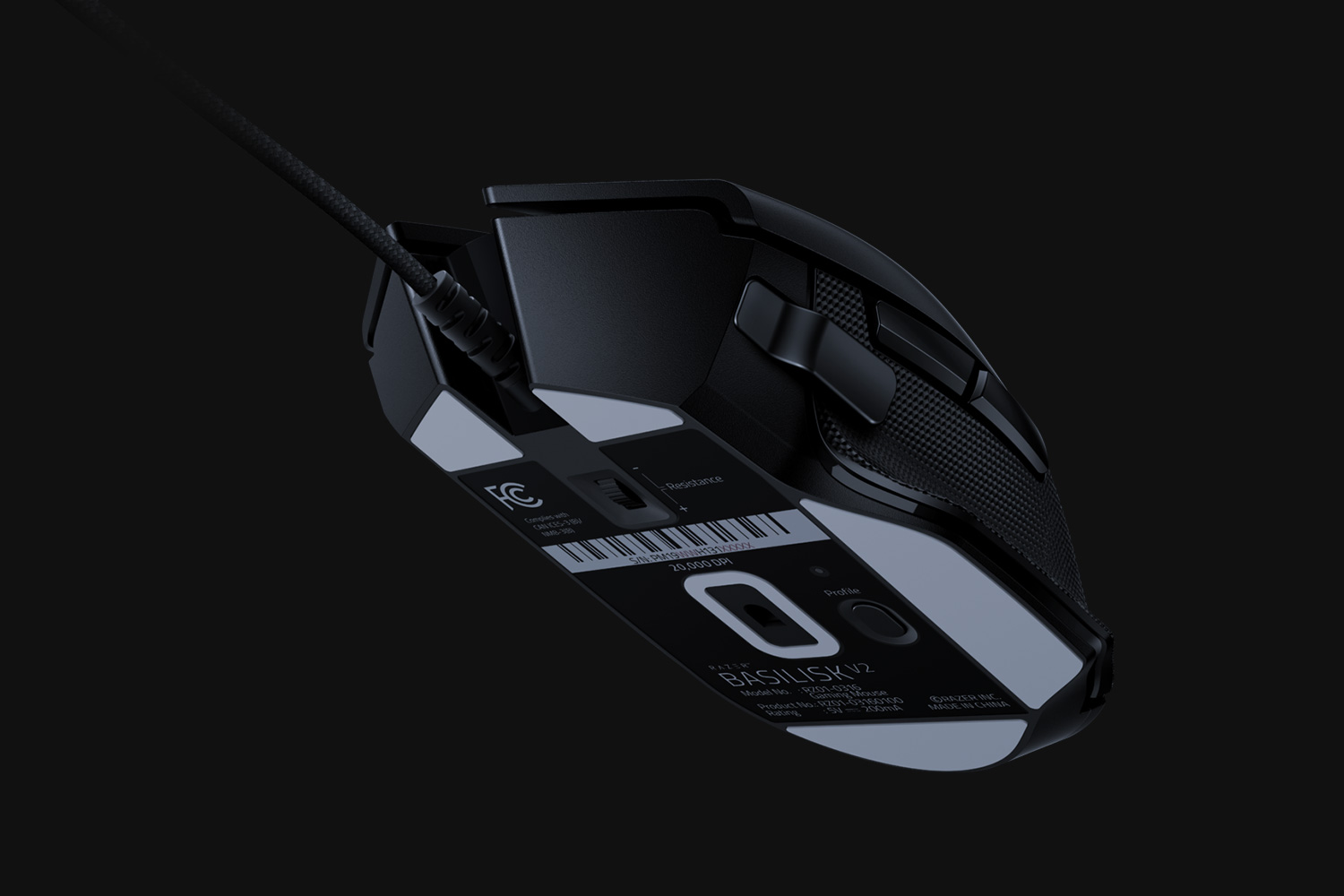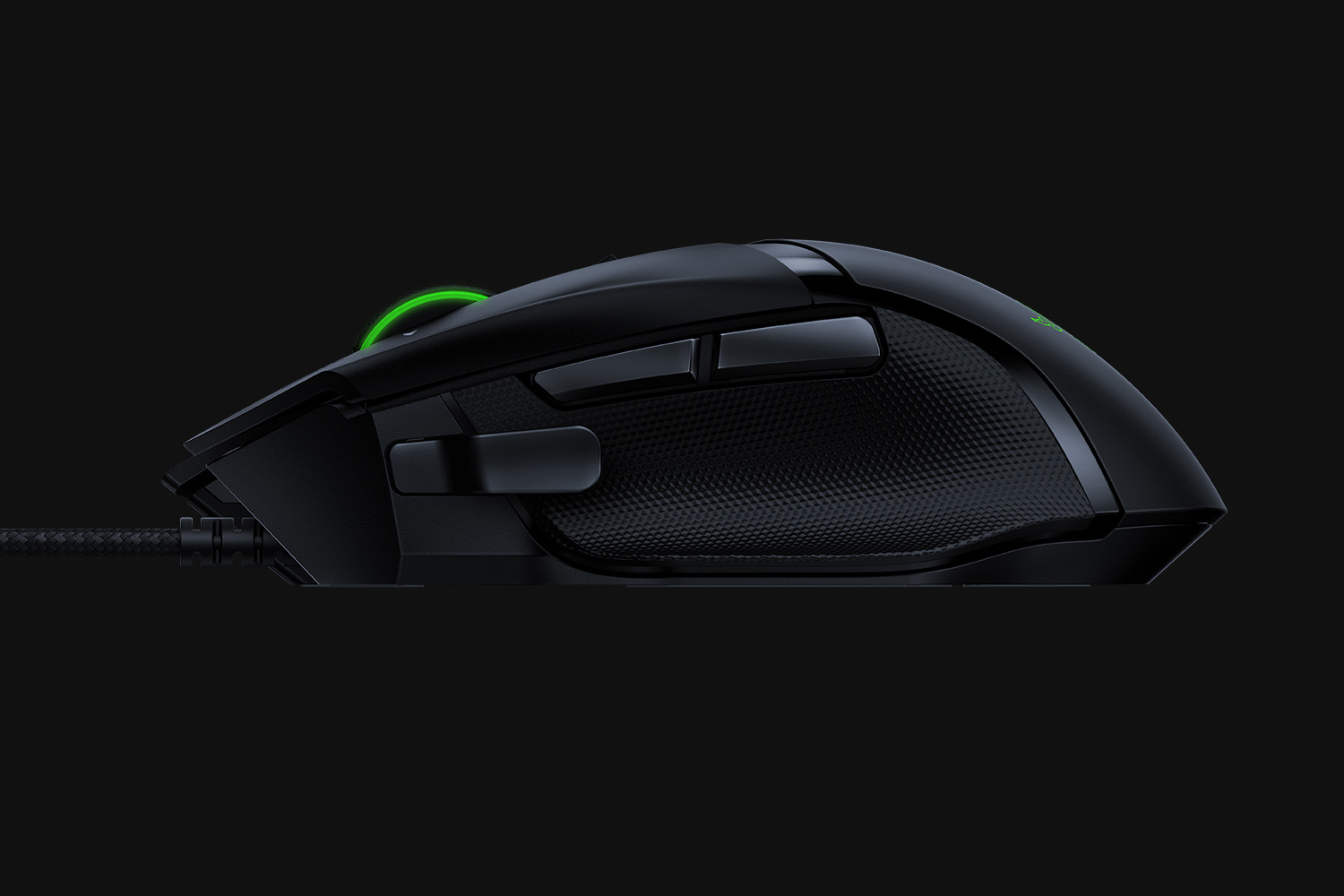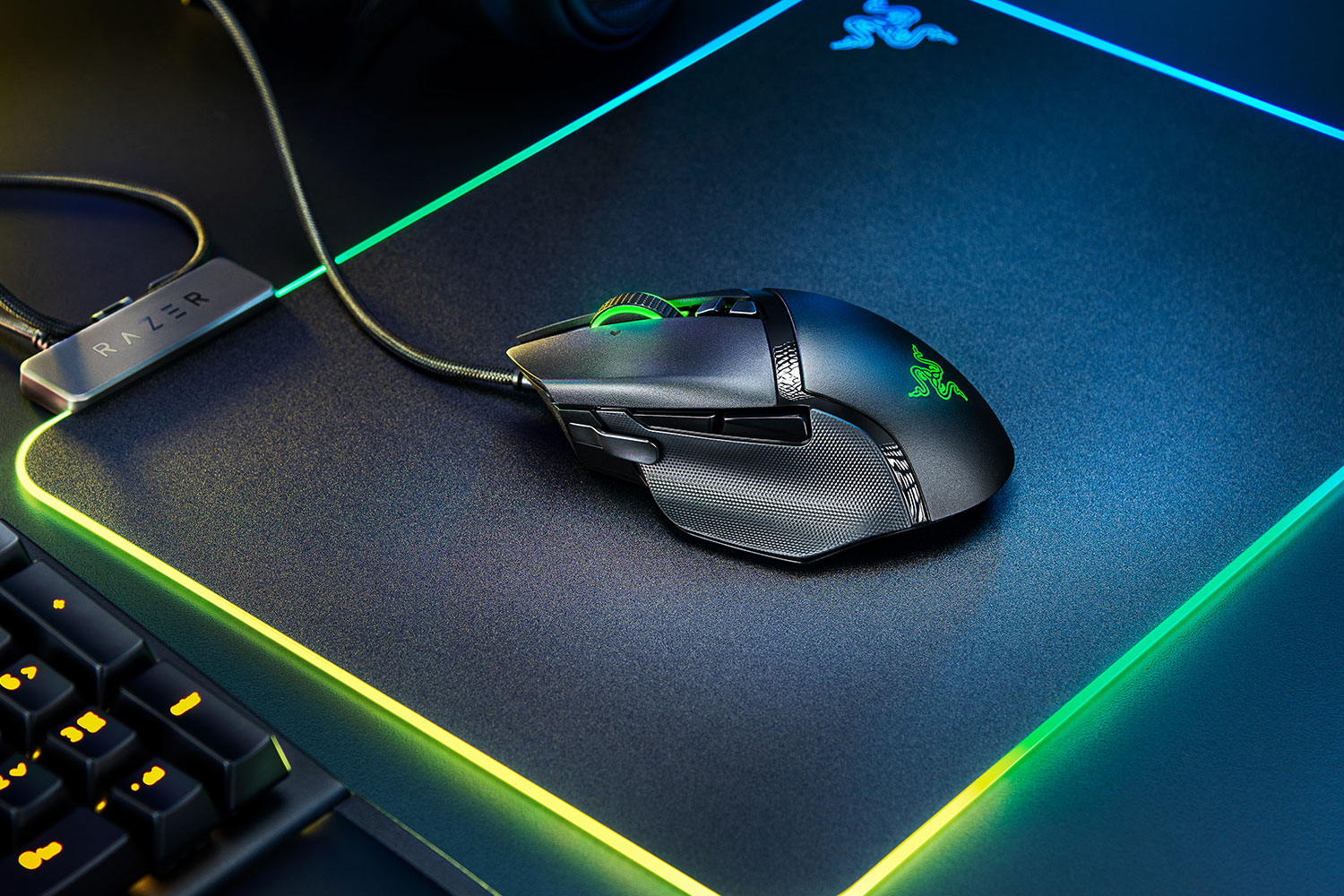Our Verdict
The Razer Basilisk V2 takes an already-solid gaming mouse and makes it better, with an improved sensor, better design and customizable scroll wheel tension.
For
- Best in-class optical sensor
- More comfortable than the original
- Adjustable scroll wheel resistance
- Plenty of programmable buttons
Against
- Left and right buttons feel a touch flimsy
- More expensive than Razer’s Deathadder V2
PC Gamer's got your back
Price: $80
Sensor: Razer Focus+ Optical Sensor
Sensitivity: 20,000 dpi
Polling Rate: 1000 Hz
Programmable Buttons: 11
LEDs: Customizable RGB
Cable length: 7 feet
Weight: 3.2 oz
Razer has spent the last few months churning out brilliant gaming mouse after brilliant gaming mouse, and the Razer Basilisk V2, the updated version of 2018's Basilisk, is no exception. It's an overhaul of the already-solid original, complete with customizable scroll wheel resistance (can every mouse have that, please?), extra programmable buttons and Razer's latest optical sensor, which boasts the best tracking and accuracy around.
It's not the first time Razer has upgraded the Basilisk. Since the original was released in 2018 it has released two wireless mice in the Basilisk Range: the Basilisk X Hyperspeed (solid, and relatively affordable), and the Basilisk Ultimate (brilliant, and ridiculously expensive). The V2 takes its design inspiration from these two cord-free offerings, rather than from the original, which means you get a larger, curved thumb rest protruding from the left-hand side of the mouse. The original Basilisk's thumb rest had lined ridges, which I wasn't a fan of—the V2's is more uniform, more grippy, and more pleasant to the touch. It also has extra grip for your ring and little fingers on the right-hand side of the mouse. While it looks more obnoxious than the original—it's all sharp angles and shiny plastic accents—it's also more comfortable.
That extended thumb grip sets it apart from many other high-end mice: you can actually rest your thumb on it when you play, rather than having to grasp the side of the mouse as you would normally. My hand never felt tired using it for a full day of work, or for hours-long play sessions. Admittedly, that's the case with most modern mice, but I still think it's one of the most comfortable devices I've used.

The Focus+ Optical sensor is another excellent addition. Razer puts the sensor in all its new top-end mice, and as I wrote on my reviews of both the Razer Deathadder V2 and the Razer Viper Ultimate, it's the best on the market. It goes up to 20,000 DPI, can track at 650 IPS (inches per second), and has a resolution accuracy of 99.6%. On the specs sheet, it blows competitors out of the crowded water, and in practise, I never experienced any issues with hitching or wayward tracking. Arguably, the specs are overkill—does anyone ever need 20,000 DPI?—but if you want the best sensor money can buy, this is it.
The scroll wheel is improved, too. Firstly, you can now tilt the wheel left and right, which acts as an extra two programmable buttons. I was sceptical at first, and worried that wiggling it from side to side would make it feel loose after a while, but those sideways clicks feel solid, and I never accidentally clicked when I was trying to scroll, which was a pleasant surprise. You can also adjust the scroll wheel resistance using a seperate, smaller wheel on the bottom of the mouse. It works exactly as you'd hope, and you can go from frictionless scrolling to more rigid than you'd ever need. Scroll wheel resistance is almost completely a matter of taste, and making it adjustable is a common-sense feature I wish all gaming mice had.
Other changes from the Basilisk include a more flexible wire, which reduces the risk of the mouse pulling to one side, and optical switches for the left and right clicks. Razer claims these switches will last longer than the original's mechanical ones (70 million vs 50 million clicks), so you shouldn't need to replace them in a hurry. Again, they're the same ones Razer uses in its other mice, and they're perfectly reliable: I didn't mislick once in my testing. The V2 also has 100% PTFE mouse feet (the same material in non-stick pans), which means it glides more smoothly over a mouse mat or desk than the original. That's not to say the original feet were a sticking point, but again, this is a step up.

The only real negative is that the left and right mouse buttons are a little flimsy, in line with Razer's other recent mice. They're solid when you're clicking them, but they waggle left and right at the slightest sideways pressure. I've been using similar Razer mice, with similar waggle, for months and months now, and they haven't become any looser, which makes me more confident that this isn't a major issue. But still, for $80/£80, I'd ideally want something sturdier.
The price, overall, feels about right. You can buy a perfectly good gaming mouse for half the price of the V2, but you get what you pay for, here. And yes, it's more expensive than the wireless Basilisk X Hyperspeed, but it also has a better sensor, more programmable buttons and RGB lighting, which the Hyperspeed lacks. On the specs sheet, the V2 is nearly identical to the Basilisk Ultimate, which costs $170/£170. The Ultimate has the benefit of being wireless, but still, an extra $90/£90 is a huge jump.
The Basilisk V2's real competitor in terms of price is the Deathadder V2 ($70/£70), which has the same sensor and same optical switches (I gave it an 88 in my review). The Basilisk V2 is $10/£10 more expensive, you do get the customisable scroll wheel, which also gives the mouse two more programmable buttons. If I could only pick one to use for the next year, I'd go for the Deathadder V2, purely because I sometimes use the mouse away from home, in public, and therefore prefer the understated design (plus, $10/£10 is nothing to scoff at). But, on balance, I think the Basilisk V2 is actually a better, more comfortable gaming mouse.
The Razer Basilisk V2 takes an already-solid gaming mouse and makes it better, with an improved sensor, better design and customizable scroll wheel tension.
Samuel Horti is a long-time freelance writer for PC Gamer based in the UK, who loves RPGs and making long lists of games he'll never have time to play.



